With its accumulated experience and know-how, NCN is utilising it unique SE method not only to create safe homes, but beautiful ones too.
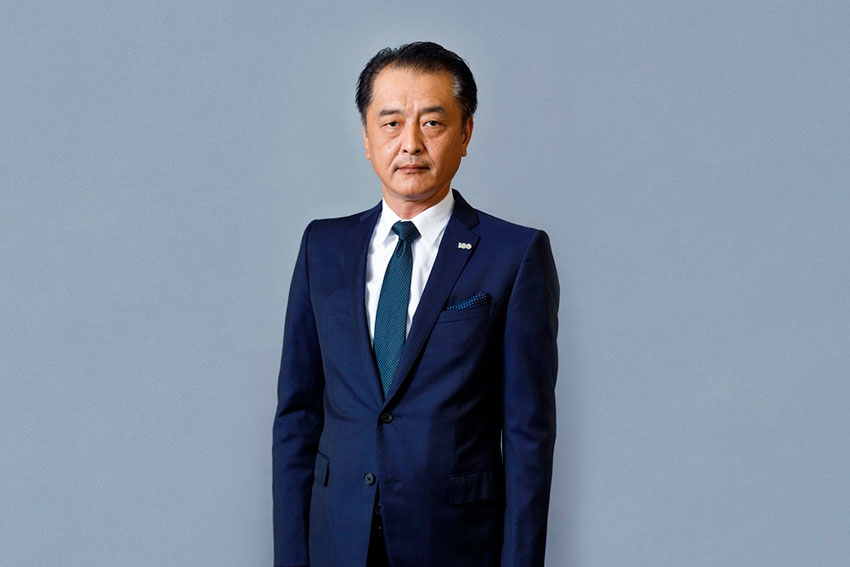
Japan’s last construction boom was prior to the 1964 Tokyo Olympics, more than 50 years ago. Nowadays, due to the demographic shift, there is an increased need for maintenance and upkeep, but on the other hand, there is less need for new construction projects. What is your take on the current state of the Japanese construction market?
One thing is for sure, in 1997 the new housing market represented 1.6 million new homes, but now 25 years later, that has shrunk to half that number and now sits at around 800,000 new homes. You can see that the market has largely decreased in volume. There are numbers showing a prediction that this trend will continue and the new housing market will continue to shrink to the size of about 600,000 new houses per year. When you look at the overall Japanese population at the moment, it is a fair number to see for new houses. That is my take on the housing sector, but one other aspect I would like to talk about today is the fact that my company is really aiming to promote 100% earthquake-proof buildings here in Japan. In fact, it is represented by the badge I am wearing today.
The reason why I say that is that Japan, compared to the UK for example, is a country that is five times more susceptible to earthquakes, and compared to the US, three times more susceptible. Yet when it comes to building houses in Japan, the government, or the Japanese laws, do not stipulate any specific standards that are in place.
Among the 50 million wooden houses that are preexistent within the Japanese market, only a small percentage of those are actually up to standards as far as having been structurally calculated within certain regulations. The reason why these wooden homes do not need to follow these building standards laws is because of Japan’s history during WWII. During the war, large-scale fires broke out and many homes burned to the ground. There was a great need for an accelerated pace to build new homes for the population. You saw that when the Kobe earthquake of 1995 took place, many of those wooden houses that were built at that time collapsed and did not survive the earthquake. The reason such effects were felt by the population lies largely in the government's hands for not stipulating strict building standards to be upheld. This is why our company’s mission is to promote and roll out these seismic structural calculations.
Our business is really about carrying out structural calculations on as many wooden buildings as possible to prove and demonstrate the value of seismic resistance.
You have developed the SE construction method, developed to realize structurally speculative, highly seismic resistant wooden buildings. In fact, not a single building constructed using this SE method was destroyed during the 2011 and 2016 earthquakes here in Japan. Can you tell us a little bit more about this SE construction method and how it structurally protects wooden buildings from seismic activity?
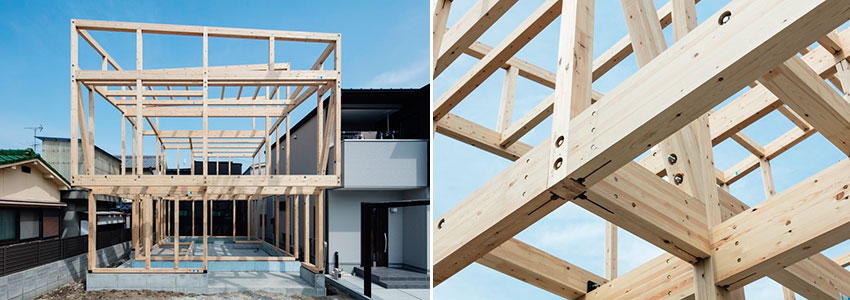
So here is an example of what our structural plans look like. It makes the method very easy for them to understand. When those who are interested in having the SE method applied, we run the structural calculations based on the floor plans that they provide us.
Even if our floor plans and the blueprints look the same, we must cater to each home differently, as each case might use different materials and are entirely unique. The numbers that come out of the calculation can vary from project to project, and that is why we provide this kind of beam and pillar technology, and to provide specific structural calculations per unit.
When it comes to see if the building is going to be earthquake resistant, it is very important not only to understand the net weight of the actual building, but also includes the net weight of the items that would be in the house. In Japan, there are lots of large earthquakes.
Let us say that based on calculations, your home is ranked three for seismic resistance, which is the highest rank by the way. During an earthquake, the weakest part of a building is actually the bottom area of the pillars, so then what we provide in terms of the calculation and simulation is an understanding of those weakest points. Imagine if the pillars were to crumble, we would know how much weight the house must withstand. We do these kinds of simulations based on each customer's home and what is inside the home. For example, if an owner had a grand piano, that would make a major contribution to the overall weight. We also know that Japan is quite susceptible to typhoons and very strong winds. We are also able to provide simulations based on large-scale storms, where wind speeds can reach 34 meters per second. This can provide information on how much the wind pressure is applied on the structure under such conditions.
Our calculations additionally can tell homeowners the amount of damage they may face or the amount of ground shaking they may experience with less severe, smaller earthquakes. We provide all of these calculations to the homes where the SE structure is implemented. When it comes to massive-scale earthquakes such as the 2011 Great East Japan earthquake and the 2016 Kumamoto earthquakes, we were able to preserve 26,000 wooden buildings through these structural calculations. In fact, all the buildings we built were considered so safe and some of them were used as evacuation sites. We actually retrieved data from the Kumamoto earthquake and did an analysis of the seismic waves. It is called “Wallstat” and it is provided when an earthquake occurs around the world, and it demonstrates the degree of that earthquake. Our clients are able to see what would happen to their buildings if they were to face an earthquake the size of the 2016 Kumamoto one. We create a video simulation for them to see as the earthquake is taking place, and along the spectrum they can see the extent to which their home might sway. We are also able to demonstrate to clients a comparison of our SE method and existing construction methods.
The services we provide to our clients are based on our seismic activity data accumulated the past. We do believe that the kind of construction method that we implement, as well as this kind of structural calculation that we promote, is very rare in the industry.
In Europe, the country that is most at risk of earthquakes is Italy, so we have also exported our services there too. Our special calculations, methods and technologies were first introduced to the world through Italian architectural magazine, even before Japan.
In the US, the West Coast is much more prone to earthquakes than the East Coast. For that reason, we are targeting the West Coast in the US market.
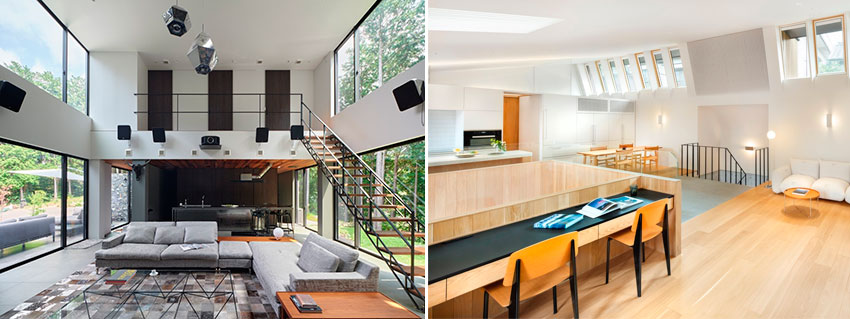
The Pacific Ring of Fire is a very volatile geographic region and encompasses many countries. Are you looking to export this SE construction method to these nations within the Pacific Ring of Fire?
Yes, of course. In fact, we had plans to target those areas but then we were hit with the COVID-19 pandemic and so our plans have stalled as a result.
Another interesting aspect in regards to the future of wooden structures is that from the perspective of striving toward a carbon-neutral society with various building standards and regulations, there is a larger need for the promotion of more natural eco-friendly resources. While there are such trends that can be seen in Japan, there is a larger demand for them within Europe. There is great growth potential in terms of the European market. The largest country globally would be the Chinese market from the perspective of growth potential. I have visited China and created a number of great contacts, even within the construction industry. However, challenges we may face when it comes to promoting the SE method in China is that it may affected by various situations such as COVID-19 and current geopolitical relations between China and Japan.
I actually hold another position. I am the Senior Managing Director of Muji House. Through this capacity as Senior Managing Director, I work together with those in the construction industry, developers in China and Korea as well as other countries. One thing I can share with you is that exporting our technologies has definitely been the biggest challenge when it comes to international business and that will continually be a challenge too. When it comes to natural disasters globally, not only are we becoming more susceptible to earthquakes, but extreme weather events including large-scale storms are now hitting places like the United States. Actually, when it comes to the seismic technology we use to help buildings withstand earthquakes, the same technology can be applied to wooden buildings and see how they would withstand a storm.
Our mission and the arena of our responsibilities have expanded to include not only earthquakes, but also other natural disasters such as storms and typhoons. Furthermore, we have also expanded to help accelerate the usage of eco-friendly resources and natural materials in the construction of such buildings. When it comes to wooden materials, Japan is import reliant. We import 60% of the wood that is utilized here. I have been in discussions with the Forestry Agency and the Ministry of Agriculture, Forestry and Fisheries, and what is interesting is that Japan has the capacity to grow timber at around 100 million cubic meters. We are looking at ways to not only export our construction method, but also export wood itself. In Japan, only 0.45% of trees grown annually are cut down. In a sense, this small percentage is the reason why trees are overgrown in the mountains in Japan and have a negative impact on the country. So by supplying wood and materials overseas, we are not only helping the Japanese environment, but also assisting countries such as China, where the rate of growing trees cannot keep up with the demand.
Countries such as the Philippines, Indonesia and Malaysia, heavily forested areas, are tropical climates and therefore more susceptible to deforestation in terms of the balance of the local ecosystem. Forestation represents a quite sustainable business here in Japan considering the climate and the environment. We are really hoping we can tap into that industry and contribute to the world’s needs.
We know that NCN has a partnership with Muji House since 2004. What role do partnerships play in your business model and are you looking for any partnerships in overseas markets?
We consider partners as those who are acting on shared goals. Before I answer this question, I would like to digress a little and explain the special arrangement we have with Muji House.
As well as Muji House, we have partnered with the Frank Lloyd Wright Foundation, and there was a mission that I have held since that time, and that is a response to the aging demographic here in Japan. When it comes to the residential housing sector in Japan, after 30 years, houses are broken down, destroyed and rebuilt. In France and the UK, you can see that it is much longer. When it comes to housing loans in Japan, it is actually more affordable to build new homes rather than buy older ones. The shared mission we have with Muji House is to extend the life cycle of homes and to create a culture where it is more attractive and appealing to have longer-lasting houses.
In 2003, we created a company with the Frank Lloyd Wright Foundation called Usonia 21. Its mission was to extend the life cycles of homes, and we have created a similar contract with Muji House to ensure that the Muji houses constructed are ones that have a much longer lifespan. Not only are we looking to create homes in Japan that are earthquake resistant because of the fatal cost, but our mission involves and embraces creating a more beautiful housing environment and ensuring that our houses are more aesthetically pleasing with the removal of wastage and non-esthetically pleasing houses from the face of Japan. Creating beautiful wooden buildings, while also being very strong, durable and resilient.
Another theme that is important to me is to be energy efficient. It is important to me to build buildings that conserve energy and can reduce their footprint on the planet. These three aspects; resilience, aesthetics, and eco-friendliness are the kinds of homes we are promoting through Muji House.
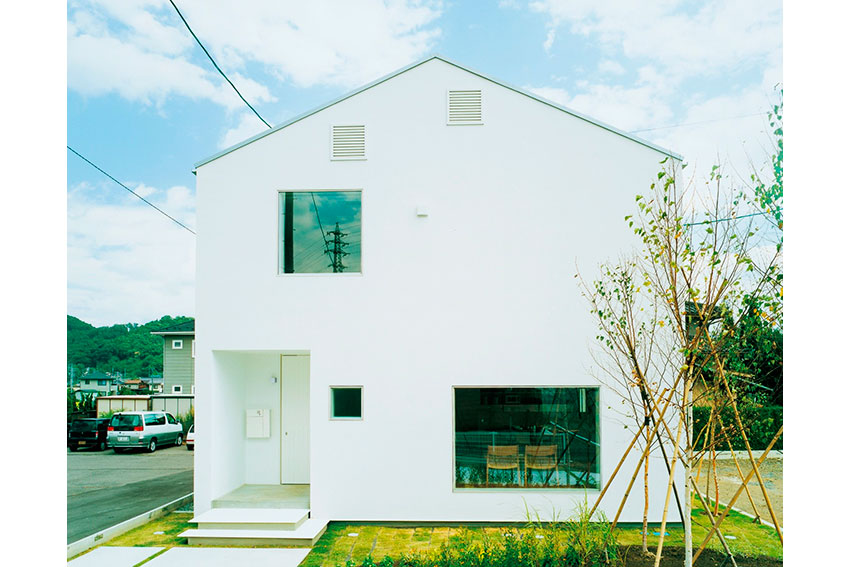
This is a picture of the house we had designed by Kuma Kengo, a very famous Japanese architect. We have had other buildings designed by other famous designers and architects such as Kenya Hara and Kazuhiko Namba. We are promoting these kinds of homes that can be utilized for long periods of time, so we partner with people who embrace similar missions and share the same kinds of goals. The three principles I have mentioned are the overall mission of NCN as a company.
In 2022, you established the Wooden Structure Technology Center, an experimental facility for wooden structures. Can you tell us a little bit more about it?
It has been quite the norm for us to conduct different research at university facilities or government research facilities. We have seen a growing trend in people who are looking to build using wooden materials in Japan. This has led to a greater demand for simulations and technological calculations. To meet that demand, we built the Timber Structure Lab. When it comes to researchers who specialize in wooden materials, there are very few within Japan. There are plenty doing research into high-rise buildings that are being recruited by the construction giants in Japan. We have been in this market for over 26 years now, and rather than relegate these materials, we contribute as far as our expertise and research. This really was another motivating factor in building the Timber Structure Lab.
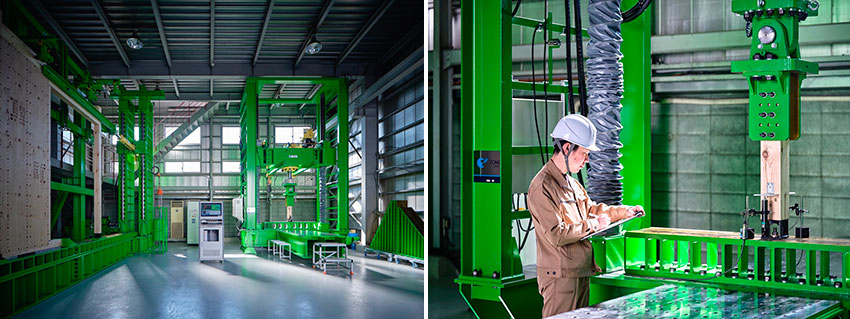
Out of all the construction projects you have worked on thus far, which one is your favorite?
I am always on the search for that. Right now, I would have to say that it is my own home. I am actually promoting it and there is a video on Youtube.
Ultimately, I am looking to have a lot of interest in tiny homes. My own home was something I created on my own and it is open for my staff to stay in. It is in Nagano prefecture, in the mountains, and it is a very minimalist home. I love the minimalist aesthetic, and this project is my favorite.
Imagine we come back and have this interview again in five years' time. What are your dreams and goals for NCN for the next five years?
My number one mission is to ensure that all homes in Japan are 100% earthquake-proof, and it is of the utmost importance to me. Whether that is achieved through our SE construction method or not is not actually the issue. To achieve this goal of a 100% earthquake-proof home in five years' time, going forward it is important to not only promote our construction method, but to provide alternative methods that might be cheaper or simpler to implement.
0 COMMENTS